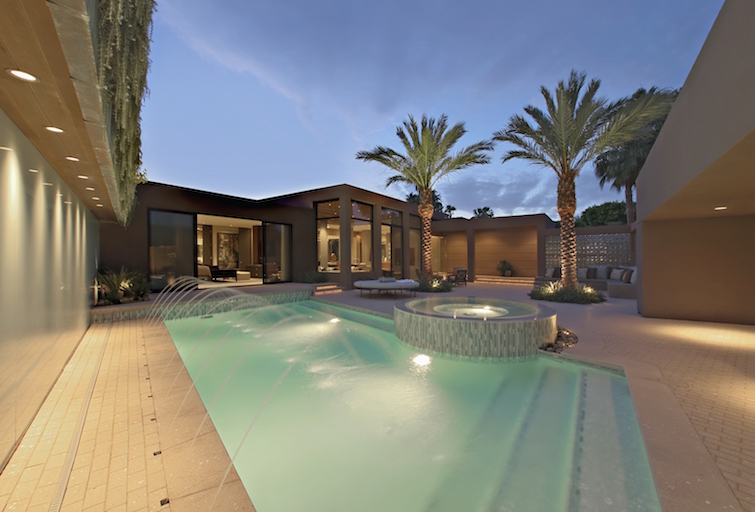How To Save Pool Energy Usage
June 09, 2015 at 04:30 PM

If you’re a pool owner, you’re probably aware that your pool can consume a large amount of energy. Fortunately, there are options for saving money on the energy a pool uses. Some of the energy-conserving methods require investing in updated equipment, but given the amount of money saved on utility bills over time, these methods are certainly worth considering.
Below are some key ways to reduce your pool's energy consumption:
1) Invest in a smaller, more energy-efficient pump and reduce the amount of time and at what speed it runs:
The larger the pump, the greater your pumping and maintenance costs, so use the smallest pump you can for your pool's size. Call a pool supply store or check an energy-saving calculator to figure out the right-sized pump for your home's pool. Choose the pump that's right for your needs without buying too much pump for your pool.
For ultimate energy efficiency, invest in a variable-speed pump, which can be programmed to run at the minimum speed it needs for cleaning, heating and so on. Often available with eight varying speeds, variable-speed pumps will adjust their energy consumption to your pool's needs at different times in the maintenance cycle.
Reducing the amount of time you operate your pump will cut down on required energy. Several short cycles of pumping can be more efficient than running the pump all at once because a concentrated blast of pumping leaves the rest of the day open for the pool to collect debris.
Finally, be sure to keep all intake grates free of gunk because clogged drains will make your pump work harder.
2) Turn down the heater
Maintain the most comfortable temperature you can without overheating. The Red Cross advises that the healthiest temperature for swimming is 78 degrees. Keep in mind that raising your pool's temperature one degree can cost an extra 10 to 30% in heating bills. If you want to keep your pool heated above 80 degrees, promptly lower the heat when the pool isn’t in use.
You might also consider investing in a high-efficiency heater, which can reach 90% efficiency, resulting in substantial savings on energy bills.
Also, as with your pump, find out which heater size is best for your pool and consider replacing an oversized heater with one sized appropriately for your pool.
Keeping a cover on your pool can also reduce heat loss and save up to 70% on energy.
And finally, decide whether solar heating can work for your needs. Heating your pool with solar energy can significantly lower the amount of time your heater has to operate.
3) Consider LED lights
LED lights use less energy and have a longer life span than incandescent bulbs. LEDs require less than 50 watts of power to operate versus the 300 watts required by incandescent bulbs. LED lights have been known to cut energy expenses by up to 90%. When you also consider that LED lights provide up to 50,000 hours of illumination compared to the 4,000 hours offered by incandescent lighting, LED’s energy-efficiency is hard to ignore.
Solar lights are another excellent energy-saving option.
4) Assess your cleaner
Like with all pool equipment, choosing the right products for your pool based on pool size, debris type, usage level, and other individual needs, results in more efficient use of energy. When it comes to cleaners, there’s a variety of options:
Suction-side pool cleaners
Suction-side cleaners that attach to the suction line of a pool's plumbing system, and then picks up dirt and passes it to the skimmer and the pool's filtration system.
Pressure-side pool cleaners
Pressure-side pool cleaners include a hose that you attach to the dedicated return line of your pool. Pressure cleaners vacuum up dirt and debris and deposit it into a mesh bag attached to the cleaner. Some pressure-side automatic pool cleaners require an additional booster pump for maximum power.
Robotic pool cleaners
A robotic cleaner uses a self-contained filtration system and uses low-voltage electricity and requires a GFI-protected electrical connection to operate.
Robotic cleaners are higher priced than the other cleaner options, but are energy-efficient. If you want to stick with a pressure cleaner, it can be alternatively run off a variable-speed pump to save money and energy.
5) Take advantage of your pool automation system
Take advantage of your automation system’s seasonal adjust if it has one to program your controller to turn your filtration system, cleaner, lighting, pumps, and water features off and on during off-peak pool usage times. Running the pool's filtration system at off-peak hours - when electricity demand is lower - can help lower costs. Check with your utility company for its off-peak times (generally between 8PM and 10AM).
6) Do some preventative maintenance
Daily pool maintenance sounds more time-consuming than it probably is, but it certainly adds up to less overall money spent in the end. Keep drain systems clear through periodic backwashing, reduce your pool temperature when no one is swimming, and clean your filter regularly. All of these tasks will keep your pool running efficiently and reduce energy costs.
If all these tips sound overwhelming, pick one or two to implement and once you notice lowered energy costs, you might be inspired to adopt more energy-saving measures!